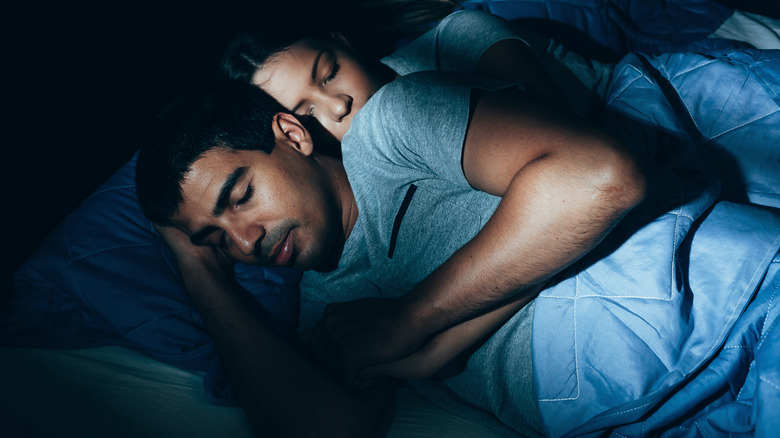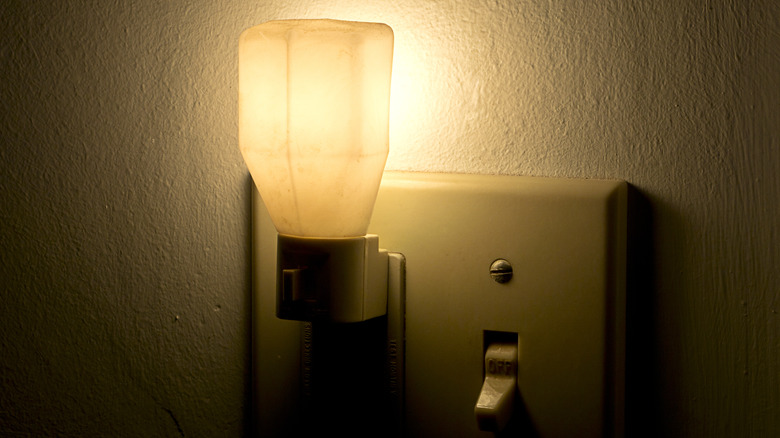Light In Your Bedroom At Night Could Increase Your Risk Of Three Serious Health Conditions
Influenced by the natural transitions between night and day, our body is greatly affected by light, reports the Sleep Foundation. Because darkness triggers chemical reactions within the body designed to promote relaxation, being exposed to light during nighttime hours can impact our natural circadian rhythm, melatonin production, and overall quality of sleep.
Researchers behind a new scientific study published in Sleep have found that light exposure during the course of the night may be associated with an increased risk for certain health conditions in older adults. For one week, the study team tracked the sleep patterns of 552 participants ages 63 to 84, including levels of light exposure in their bedrooms (via HealthDay). It was found that less than half of the adults regularly received five hours of sleep in total darkness.
"More than 53% or so had some light during the night in the room," senior study author Phyllis Zee told CNN. "In a secondary analysis, we found those who had higher amounts of light at night were also the most likely to have diabetes, obesity or hypertension."
How to keep light levels low in the bedroom
While the exact nature of the relationship is unclear, some experts suggest that the link between overnight light exposure and these three health conditions could be due in part to internal circadian clock disruption and melatonin reduction (per HealthDay). "Melatonin, also called the darkness hormone, is associated with multiple health properties, including anti-inflammatory and antioxidant properties. Light at night reduces melatonin," Emerson Wickwire, a professor at the University of Maryland School of Medicine who was not associated with the study, told HealthDay.
To help ensure a healthy night's sleep, the study researchers suggest keeping light levels low through the use of blackout shades or an eye mask (per CNN). In addition, attempt to situate your bed away from direct sunlight and refrain from charging electronic devices in the bedroom to eliminate blue light exposure. For older adults who may wake up periodically during the course of the night, some degree of light exposure may be necessary to reduce the risk of falls. In this event, researchers suggest the use of dim night lights down by the floor that emit red or amber light, rather than blue or white light, which can be more obtrusive and stimulating (per HealthDay).


